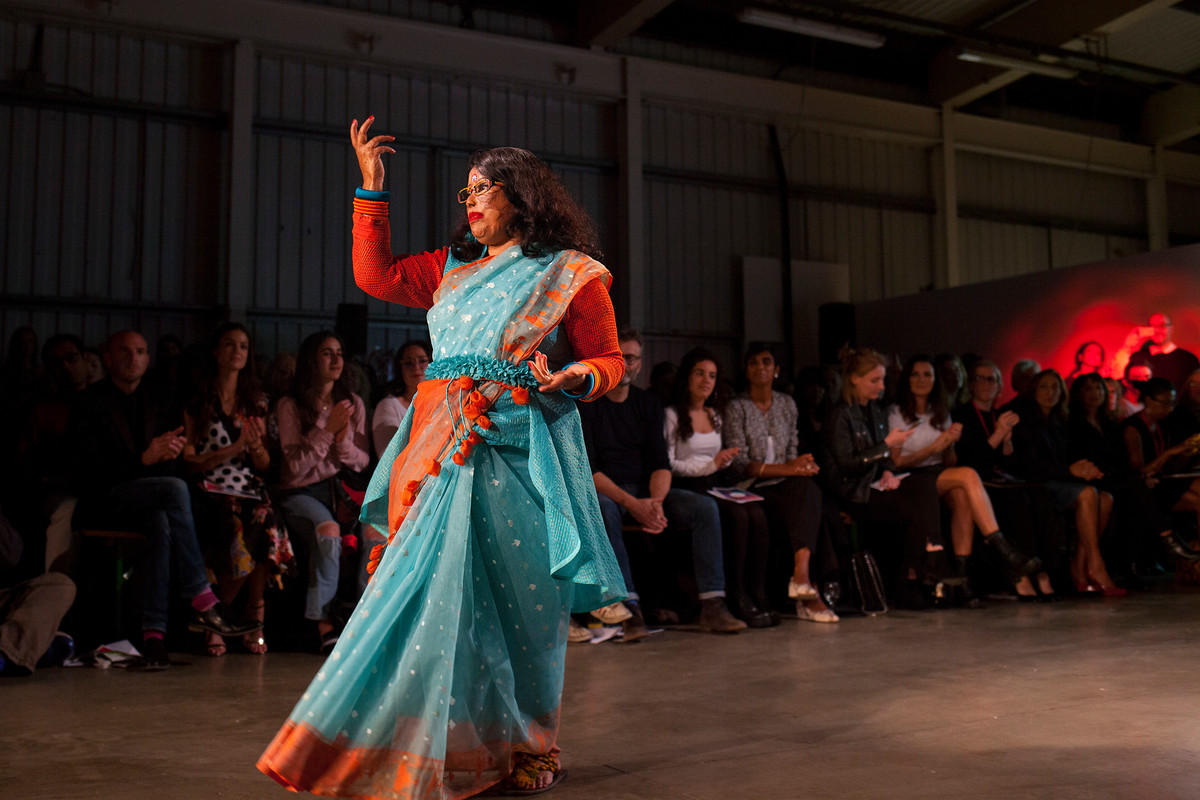Acid attack survivors on the runway
NurunNahar Begum was 23 when her husband found a new wife. When she refused to share his home with them, he threw acid over her, saying: “Your father will never get you married again ….”
“I saw just darkness,” she recalls, of the attack. “Neighbours suggested traditional remedies, people were telling me to lie down.” After two months in hospital, the bandages were taken from her face. “When I finally saw myself, I felt as though I had no reason to live again.”
And yet, she did. Last week, 22 years after the attack, NurunNahar joined fellow acid attack survivors from Bangladesh in a remarkable presentation: Survivors’ Runway, hosted by ActionAid at the Truman Brewery, London.
The five women, two men and one teenage girl - none of whom had ever left Bangladesh before - came to the UK not simply to highlight the predicament of acid attack survivors but to break the culture of silence for women and girls around the world who live each day in fear of violence.
One woman, Jasmen, 30, was attacked at age 16 by an older, male family friend who apparently believed that, because she would be more vulnerable after the attack, her family would be more likely to approve of him marrying her.
Another, Sonali, 15, was attacked with acid as a baby, along with her mother and father, after a land dispute involving her family.
From rape to ‘cultural’ practices like female genital mutilation, one in three women will experience violence in their lifetime. Seventy million girls have been married before the age of 18, most against their will. Sex within marriages like these is rarely consensual.
Gender-based violence is underpinned by beliefs that girls and women are ‘less valuable’ than men; that they are possessions and objects, denied rights and voices of their own. The resonances in the West are too familiar: ‘pussy grabber’ Trump and movie mogul Harvey Weinstein are just two of the most high profile examples.
Every act of violence is reprehensible; each bears its own agenda of suffering. For NurunNahar, the attack was followed by ostracisation; acid survivors are considered a ‘curse’. NurunNahar was stopped from going to market, from visiting extended family, from trying to regain a normal life.
Her parents and brother were evicted from their land, leaving them homeless; they became “a floating people”, she says, tears filling her eyes. Despite their situation, they lent her money to pay for her treatments but, in a final tragedy, her father and brother later died.
This is the multi-layered brutality of the acid attack: it denies its victims community, land, security. And, in a cruel irony, survivors themselves are often blamed for the attack. “This is not our fault,” says NurunNahar, passionately. “Why do we need to hide ourselves?”
“It’s often the same same in rape,” explains Farah Kabir, Country Director of ActionAid Bangladesh.“Even for such heinous crime, the focus comes back on the woman, they must have done something to deserve this. There is no tolerance, no trust, no understanding. It has to end.”
Prosecution of perpetrators is complex and dangerous. Elderly mothers may step forward to take the blame for offending sons, another perverse symptom of a system that prioritises the male. Corruption - paying officials to drop cases - can also hinder the process.
And women are put under immense presence to withdraw accusations, including threats of second attacks. Even from behind prison walls, those threats continue: ‘just wait till I get out’.
ActionAid Bangladesh has worked to end violence against women and girls since 1983. In 2002, it was part of a coalition of organisations including Acid Survivors’ Trust International (ASTI) to persuade the Bangladesh Government to control of sale of acid.
This had a huge impact. From a peak of about 400 cases a year in 1995, acid attacks have now declined to under 100. Nonetheless, the campaigning and advocacy continue, to counter the embedded beliefs of female inferiority.
Education is key. “We engage with children at an early age, both boys and girls, and we have spouse groups and mixed sex groups,” says Kabir.
“We put women at the centre of all our work at ActionAid, whether we’re designing programmes and interventions, campaign or policy reform,” she says. “It’s absolutely critical that women are empowered. Women have to believe in their own strength and agency.
“At the same time, the stranglehold may become less if there are sensitive men and boys who work with them.”
And of course, there are the women themselves. In 2004, ActionAid Bangladesh set up a network of survivors, run by the women themselves.
“When you’re an acid attack survivor, you’ve reached the lowest point,” says Kabir. “You’ve lost your dignity. The survivors we worked with wanted to speak for themselves, to support each other.”
Today, Shetu Bandhan Gori (‘building bridges’ in Bengali) 260 members who meet to share stories and solutions and to offer love and encouragement, to help survivors reintegrate into society.
Within this context, Survivors Runway was more than a chance to display the clothes, no matter how lovely, or even to highlight the stories of the survivors themselves. In the end, the event became a tribute to all women and girls around the world who live in fear.
There is a moment in the show when one of the women, Ganga, dressed in beautiful embroidered tunics by Bangladeshi designer Bibi Russell, starts dancing. She pulls up members of the front row. Soon, everyone is dancing in a moment of unique solidarity.
“My community asked me, ‘why are you going?’” says NurunNahar, now re-married with two children. “But I came anyway, for the betterment of other women and girls. I want other survivors to rediscover their own courage and worth, to lead their own lives, to enjoy their own lives.”




